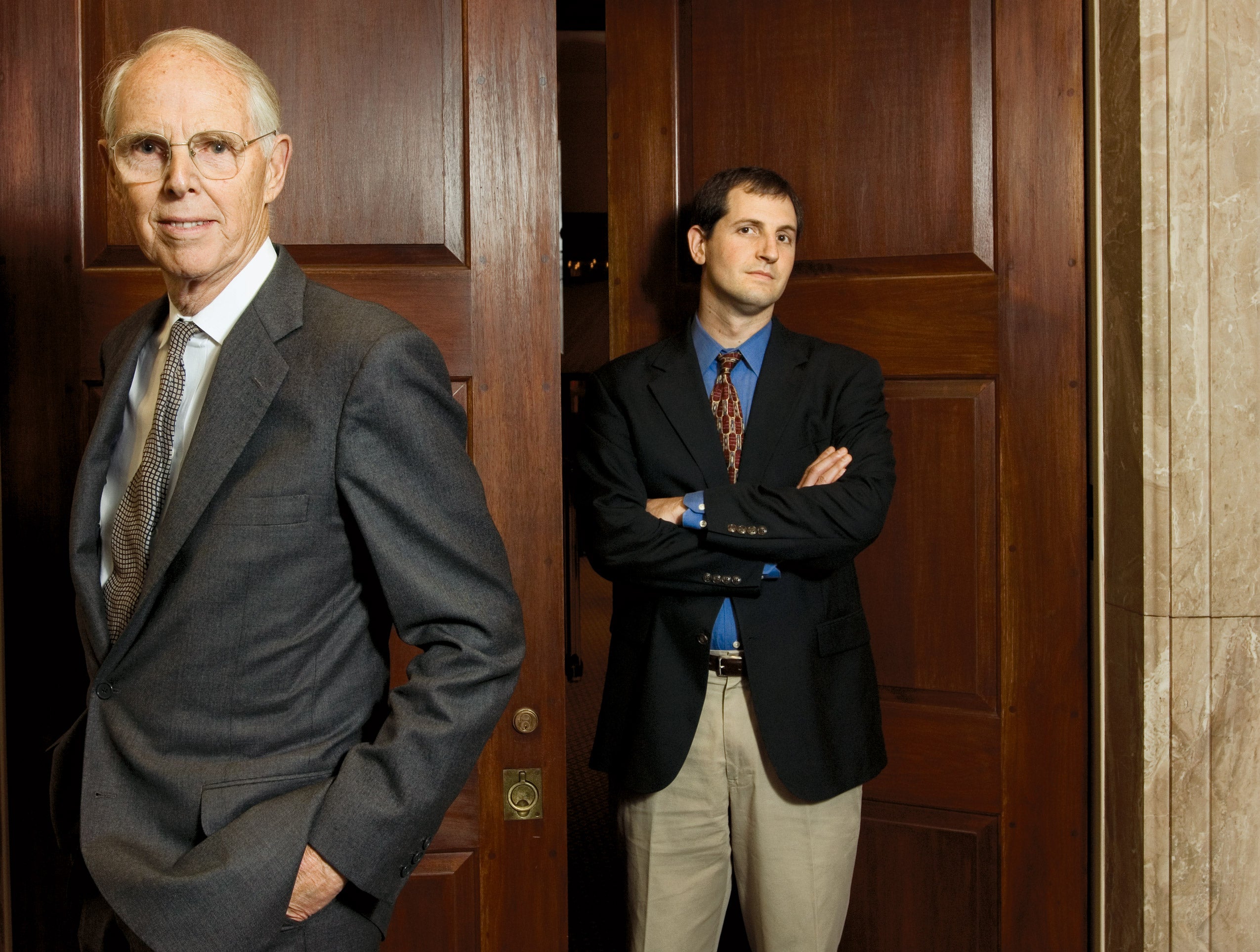Negotiation theory makes room for emotion
by Amy Gutman ’93
For decades, negotiators have struggled to “separate the people from the problem,” one of the cardinal rules set forth in the seminal book “Getting to Yes.” But what if the people are the problem–or at least appear to be?
Professor Emeritus Roger Fisher ’48 and Lecturer Daniel Shapiro have written a new book on using emotion in negotiation.
“Emotions can be powerful tools,” said psychologist Daniel Shapiro, associate director of the Harvard Negotiation Project. “You can’t get rid of emotions, so the challenge is how to use them.” Explaining how to do just that is the goal of “Beyond Reason: Using Emotions as You Negotiate”(Viking, 2005), a new book by Shapiro and Harvard Law Professor Emeritus Roger Fisher ’48, director of the Harvard Negotiation Project for 25 years and co-author of “Getting to Yes.”
Fisher and Shapiro contend that we all share “core concerns”–human wants that are important in virtually every negotiation–and that learning how to work with these concerns yields enormous benefits. For example, all of us want to feel appreciated and connected to other people. All of us want to be respected for what we do and who we are. When others recognize these needs, we tend to feel happy and cooperative, while a sense that such concerns are being ignored prompts us to shut down or lash out. “Beyond Reason” urges negotiators to make conscious use of this idea, to “learn a strategy to generate positive emotions and to deal with difficult ones.” In this way, by attending to each other’s concerns, we may find that what seemed like huge barriers are more easily surmountable.
The central question addressed in “Beyond Reason”–how best to deal with emotions in the context of tough negotiations–has been fertile ground for reflection and research since the 1980s. An awareness of the crucial role of emotions led to the introduction of the “Interpersonal Skills Exercise” into some sessions of the law school’s perennially popular Negotiation Workshop, which is taught twice a year and enrolls more than 200 students over the course of the spring and winter terms. The product of a collaboration between law school instructors and experts in communication and family systems, the exercise uses techniques such as role playing and videotaping to help students become more adept at dealing with strong feelings. The best-selling book “Difficult Conversations: How to Discuss What Matters Most” (Viking, 1999), by Douglas Stone ’84, Bruce Patton ’84 and Sheila Heen ’93, grew out of the authors’ experience teaching the exercise. That component of the Negotiation Workshop continues to draw especially positive reviews from students, many of whom have described it as a high point of their law school experience, says Robert Bordone ’97, HLS lecturer on law and deputy director of the Harvard Negotiation Research Project.
Bordone points to a better understanding of the role of emotion in negotiation as one of the field’s defining needs. As he writes in the new “Handbook of Dispute Resolution” (Jossey-Bass, 2005), which he edited with Michael Moffitt ’94: “We hope that with time, researchers will develop a richer understanding of the ways that shame, anger, hope and fear affect disputants. And we hope that scholars will find vehicles for translating these findings into advice that will be useful to practitioners.”
